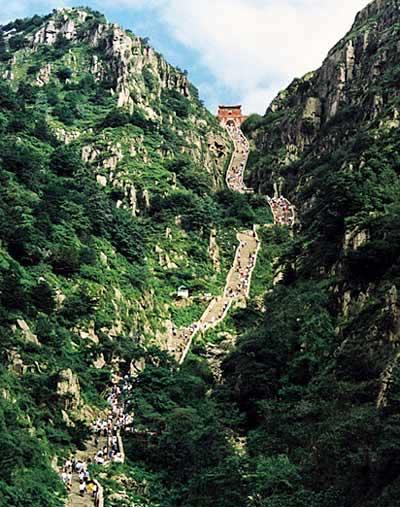
 |
| Mount Taishan(CNTV) |
In the southern part of Mount Taishan, there are widespread fissure springs in the archaeozoic stratum, with spring water flowing from the top of the mountain to its piedmonts. The sweet and clear water is good for the heart and eyes, and has the effect of clearing away distress, moistening the intestines, and prolonging life. Therefore, the ancient people called it the “Sacred Water of Mount Taishan.” In the northern part of Mount Taishan, the limestone stratum in the upper and middle Cambrian and Ordovician periods slopes to the north while the ground water pours out springs here and there from the incision of the land ranging from Jinxiuchuan to the north. Ji’nan is a city of springs because there is spring water and willows in the yard of each family since the karst water on the northern edge of Mount Taishan flows under the ground to the north, but is cut off by the gabbro in the stratum areas and rushes out in Ji’nan.
The physiognomy of Mount Taishan consists of four types which are alluvial and diluvial tablelands, destructional and constructional hills, low mountains formed through tectonic denudation, and low-medium mountains with etching structures in a descending order. They have formed a landscape featuring a variety of topographies, with endless magnificent mountain peaks rising one higher than the other. Mount Taishan is located at the side of the intersection between the north-south passageway on the North China Plain and the east-west passageway at the middle or lower reaches of the Yellow River. This plays a key role in expanding the influence of Mount Taishan and promoting its culture.


















 Wild Siberian tiger kills cattle in NE China
Wild Siberian tiger kills cattle in NE China


![]()
